
Posts Tagged: mating
Love Out of the Blue
Birds do it...bees do it... You've probably seen the territorial male European carder bees on...
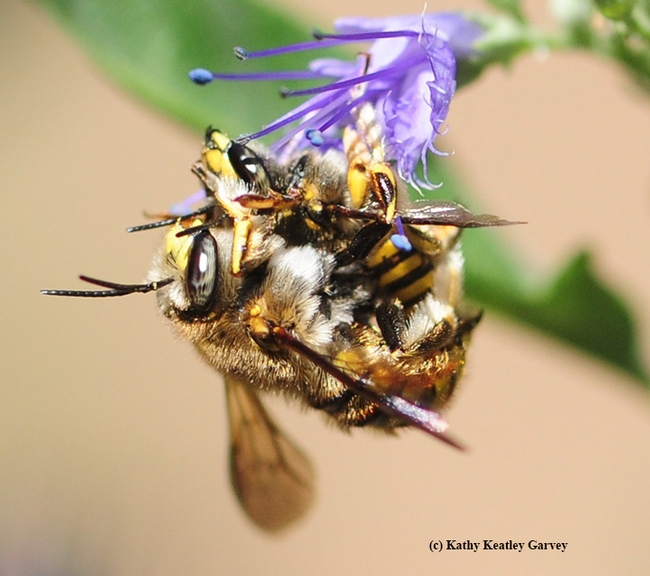
European male carder bees mating. The male, the larger bee, is about the size of honey bee. The European carder bees were introduced in New York in 1963 and became established in California in 2007, scientists say. (Photo by Kathy Keatley Garvey)
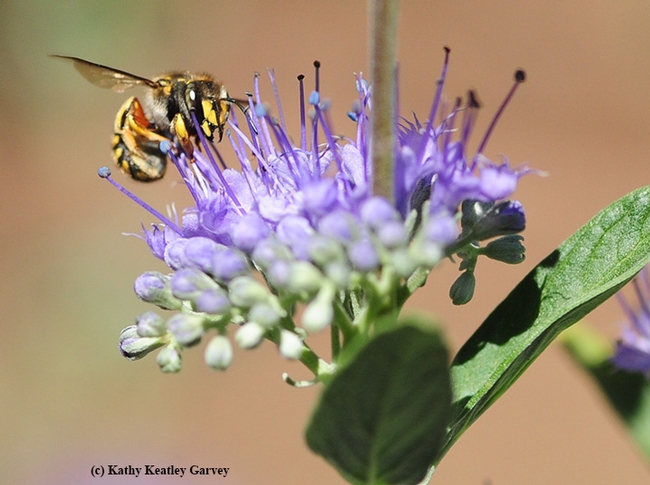
A female European carder bee sipping some nectar from bluebeard, Caryopteris "Blue Mist." (Photo by Kathy Keatley Garvey)
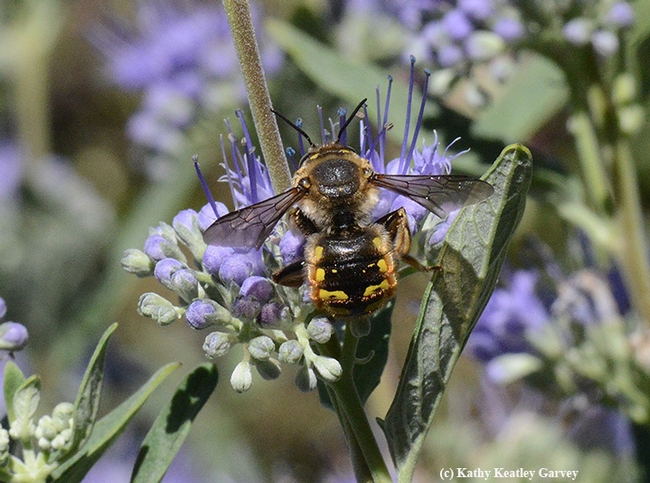
A male European carder bee pauses during patrol for nectar refueling. (Photo by Kathy Keatley Garvey)
Insect Art in the Garden
If you look closely, you'll not only see the cycle of life in your garden, but art as the center of...
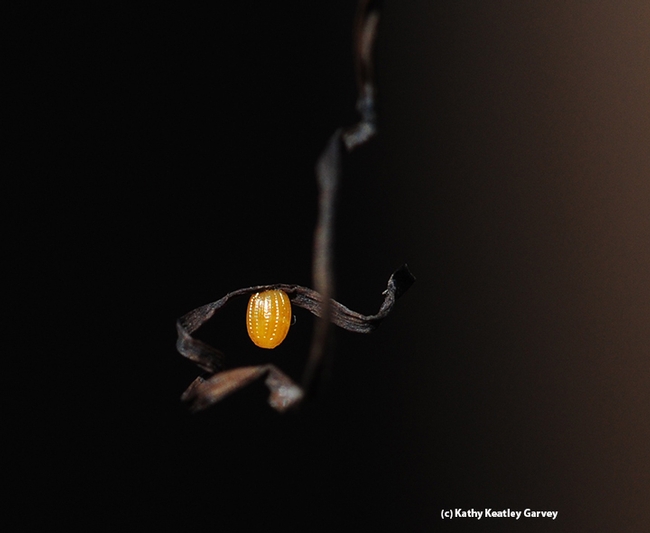
The tiny yellow egg of a Gulf Fritillary glows in the early morning sun. (Photo by Kathy Keatley Garvey)

A Gulf Fritillary caterpillar inches away from a passionflower. (Photo by Kathy Keatley Garvey)

The empty chrysalis of a Gulf Fritillary hangs like a broken chandelier. (Photo by Kathy Keatley Garvey)
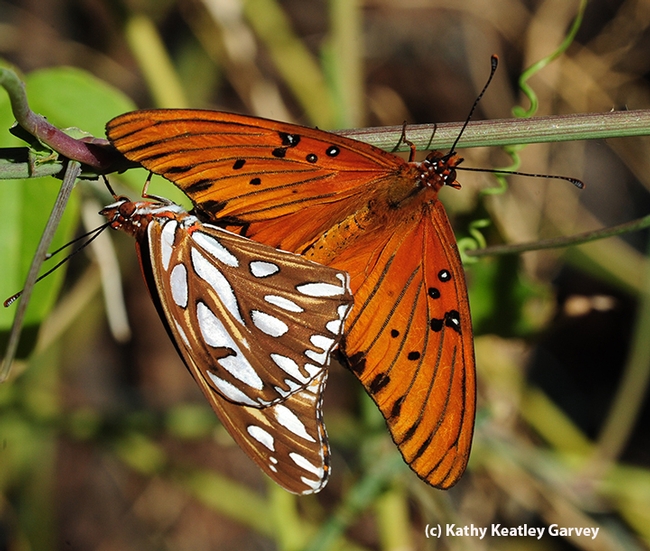
Gulf Fritillaries, aka passion butterflies, mating in the passionflower vine. (Photo by Kathy Keatley Garvey)
Nobody Lost Their Head Today
Nobody lost their head today. Oh, in the people world, all across our nation's workplaces, they...

Mating praying mantids on sedum. The male looks like a thin blade of grass. (Photo by Kathy Keatley Garvey)

A mama-to-be and her handsome agile mate made quite a pair. (Photo by Kathy Keatley Garvey)

Praying mantids in disguise. (Photo by Kathy Keatley Garvey)

Let's count the heads. Yes, there are two. (Photo by Kathy Keatley Garvey)
Make Renewals, Not Resolutions
Today is Wednesday, Dec. 31, 2014 the last day of the year. Looking back, it was a year of wonder...
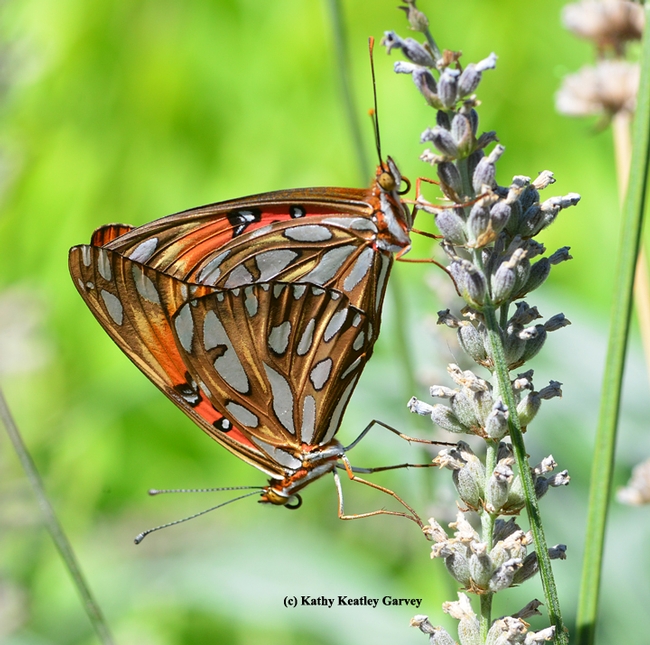
Two Gulf Fritillaries becoming one in the lavender. (Photo by Kathy Keatley Garvey)
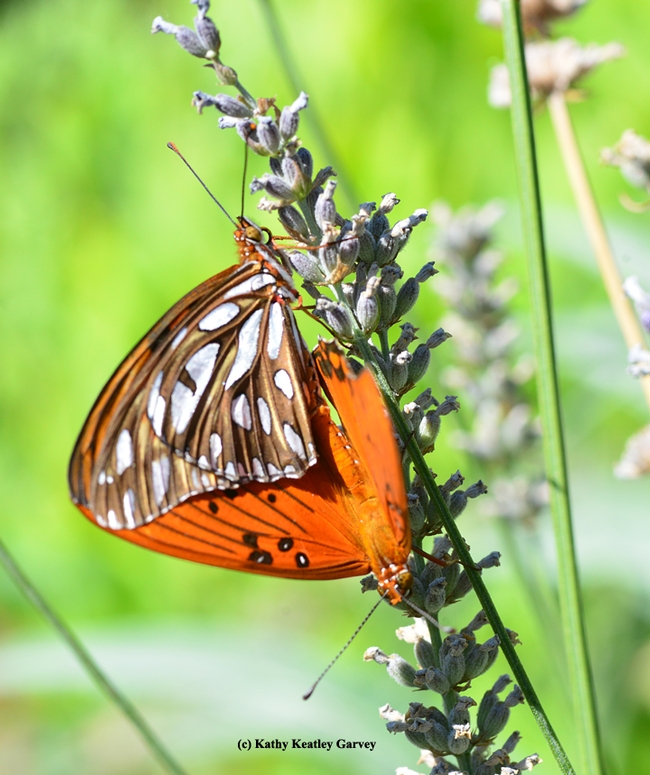
A showstopping move and a show of orange. (Photo by Kathy Keatley Garvey)

Spreading the wings! (Photo by Kathy Keatley Garvey)
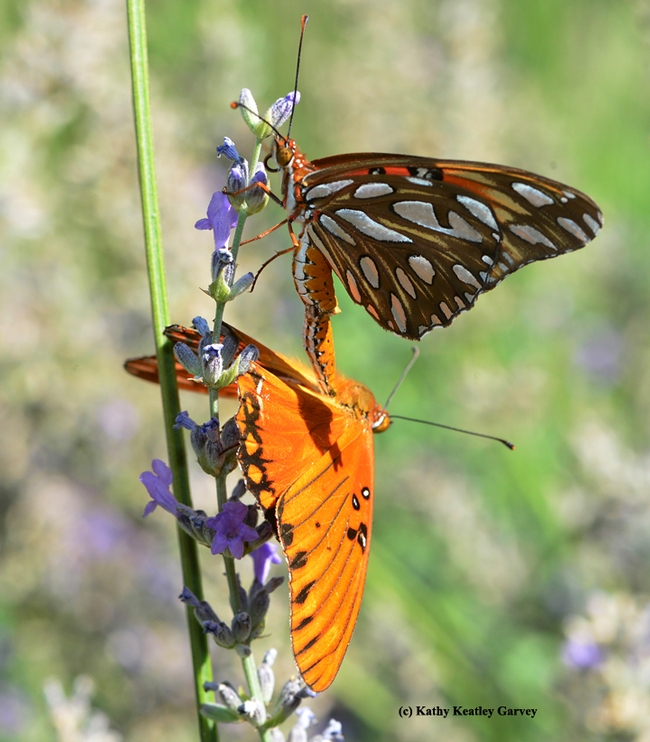
Soon there will be eggs, larvae, chrysalids and more adults. (Photo by Kathy Keatley Garvey)
USDA Regulatory Program Still Active, Growers Be Alert for LBAM Larvae
Growers and agricultural professionals in the berry business are to be reminded that the USDA light brown apple moth (LBAM) regulatory program is still going strong. Additionally, LBAM is very much a presence here - I get calls about them, and have found some myself. Do not let one of these be cause for a business busting field closure!
Mating disruption twist ties absolutely should be in place now in caneberries (see below) and probably a very good idea in organic strawberries as well. Remember that the free distribution program is now over and the ties are obtainable from private vendors. Any leafrolls should be removed, and presence of a suspect LBAM larvae cause for making a decision about making an application to reduce their numbers.
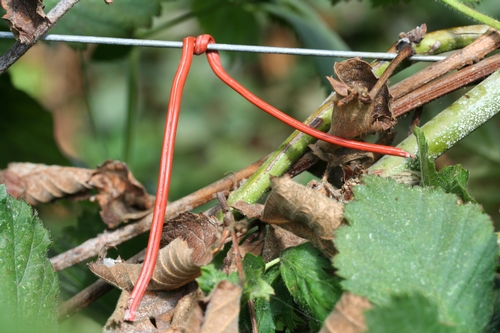
Mating disruption twist tie in place.
